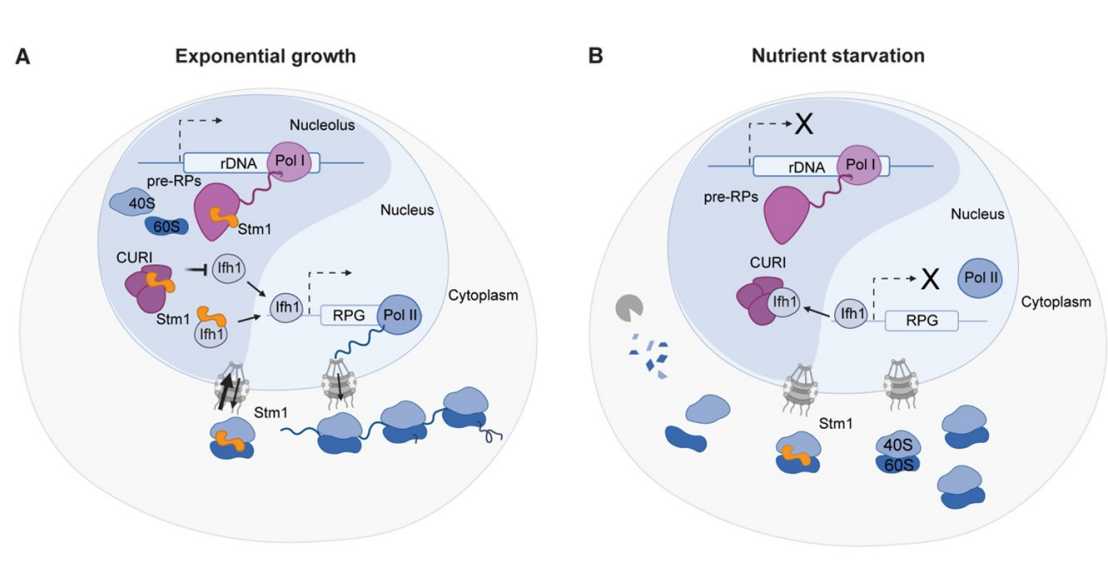Stm1 regulates Ifh1 activity revealing crosstalk between ribosome biogenesis and ribosome dormancy
Recent work by the Peter laboratory (IBC) published in "Molecular Cell", in collaboration with the Pilhofer (IMBB, D-BIOL) and Panse (IMM, UZH) groups, and Toulouse and Geneva collaborators demonstrates that the yeast ribosome hibernation factor Stm1 regulates ribosome homeostasis, balancing degradation and biogenesis in different conditions.

Ribosomes are evolutionarily conserved machines that synthesize proteins. Ribosome biogenesis and abundance are directly linked to the cellular growth rate. During nutrient starvation conditions, which halts cell growth, ribosomes are degraded. To date, the mechanisms and factors regulating this critical balance of ribosome abundance in response to environmental changes are only poorly described. One factor known to protect ribosomes from excessive degradation during starvation is the yeast protein Suppressor of tom1 (Stm1).
Dr. Bianco and colleagues observed that Stm1 is abundant during exponential growth, in contrast to bacterial hibernation factors which are starvation-specific. Indeed, the number of ribosomes is decreased in cells lacking Stm1, and analysis of the Stm1 interactome and subcellular localization revealed an unexpected function in ribosome biogenesis. Stm1 associates with pre-ribosomal particles in the nucleolus and promotes the activity of the ribosomal protein gene transcription factor Ifh1, which shuttles between the nucleolus and nucleus. Notably, an intrinsically disordered domain (IDR) in Stm1 drives the direct interaction with Ifh1, independent of its ribosome protection function. Moreover, phosphorylation of the IDR upon nutrient starvation regulates the interaction with Ifh1. Overall, these findings demonstrate Stm1 controls ribosome biogenesis and dormancy via separate domains and reveals a molecular pathway that adjusts ribosome abundance to nutrient availability.
Link to the paper in external page "Molecular Cell".